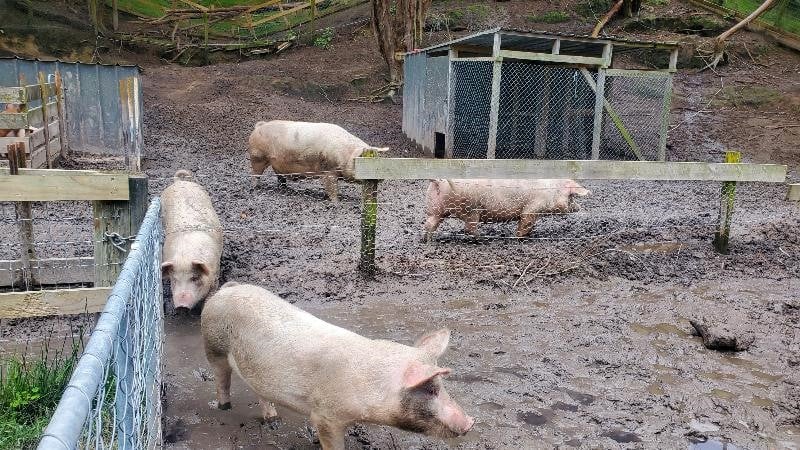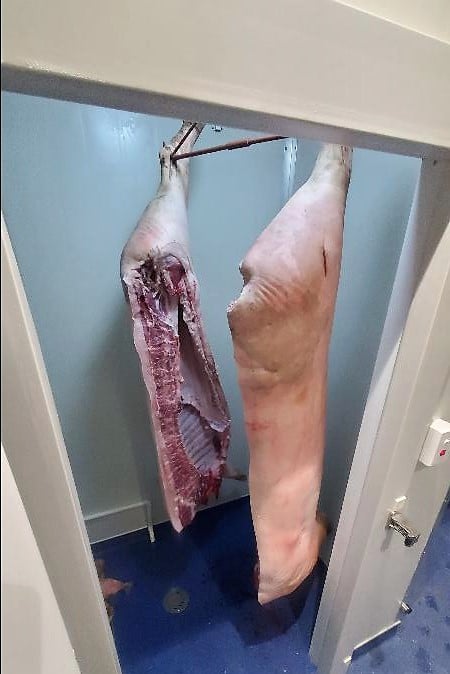Table of Contents
For decades, immersed in studying, working, learning, and teaching in the craft of meat curing, now sharing his passion with you through eat cured meat online resource.
Many people find sausages very delicious and great to eat, for many years I’ve made, bought, and studied sausages through my passion for meat creations.
I wanted to give some insight maybe into why this occurs, for someone who doesn’t know how all the variations are made. Of course, I eat sausages, including the wide variations that can be obtained from across the globe.
For a sausage to be good, or even great – it doesn’t have to be complicated or have many ingredients.
Here is a short summary of why sausages are so good:
Sausages are often high in pork fat, approximately 20-50% This will give moisture and richness to the flavor when eaten. Sausages taste good because the outside casing holds the moisture in from the fat during the cooking process.
That is the closest I can get to a summary of the common beef or pork sausage including emulsified sausages like Wiener/Hot Dogs.

150lb/75kg of Sausage Making at Home! Big Weekend
Now I want to explain the types and variations and what makes these different meat-based sausages interesting. I will also cover some fascinating non-meat sausages which are in a different category all together, these are not the ‘copy’ cat style non-meat sausage trying to look like real meat sausages. either!
Why are Sausage So Good
The reason is based on 4 factors I’ve discovered:
- Taste
- Texture
- Nutrition
- Satiation
Taste
Whether it’s a Hot Dog, Cumberland, or Sweet Italian Sausage – these all have a balance of combined salt, meat and fat which is so enjoyable for many.
After making sausages for decades you start to realize meat sausage needs 20-40% fat (pork fat generally), which is a ‘must have’ in any decent sausage. This could also be intermuscular fat, which is present in pork shoulder or the front end of the loin (Italian make dry cured Coppa from this cut because it generally has 30% fat-to-meat ratio).
Salt and its ability to bring out the flavor of the sausage are carefully measured.
Have you ever put salt on your sausage?
Probably not, since it has usually a pleasant salt seasoning in it, well hopefully. Not all sausages are good! We shall get to that section, too. I will share my opinion on whether it’s accurate or not!
I’ve had a Takeaway sausage rolled in salt before it was ready – it was borderline unedible (1995 – Tuatapere, New Zealand).
That was a shameful Sausage maker!
Sausages can come in many types, classes, and forms. I am focused on the types of common pork and beef sausages I’ve seen across the world such as:
- Italian Sausage
- England Pork Sausage
- Beef Sausage
- Hot Dogs
- Cumberland Sausage
- Borrworst
- Bratwurst

Good Sausage Starts with Good Pork

Texture
Certain people prefer the uniform texture of a Wiener or Hot Dog sausage through the process of emulsion (yes like Mayonnaise). When the meat and fat mixture is mixed for an extended period of time, it extracts myosin, which does a binding conversion to ice or cold water.
This creates an even uniform Hotdog or Wiener.
On the other hand, my preference is a fresh sausage like Butifurra, which has ‘showcase’ fat: after cooking the sausage larger chunks of fat are still visible in the sausage when you cut and eat your sausage.
Why is the Texture So Good of a Sausage?
Because it creates moisture that makes the meat parcel so much more enjoyable, this applies to either an emulsified sausage (Hot Dog) or a Butifurra (Spanish Classic Sausage Meat Chunky, visually separated meat and fat, with salt and pepper.
Butifurra is so popular in …. Spain, they hold an animal sausage festival, it very much all comes down to the quality of the meat, salt and lots of peppercorns! These sausages just have those 3 ingredients.
I’ve had skinless sausages and made them, like the Montenegrin Cevaps, however without the sausage casing, this is more like a ground meat Burger.
Nutrition
Any decent sausage is mostly meat. Beware, there are some shocking minimum regulated rules across the globe on the percentage of meat to call a sausage, a sausage. More on this later.
In terms of the trace elements and minerals that can come from ‘good’ meat, the protein and amino acids one gets from a sausage provides a hearty meal.
Unless it’s one of the Nuremberg sausages, which size should be equivalent to your pinky finger. That’s why 3-5 are served at a time (it’s a very good 500-year-old recipe which I copied and make, using lots of Marjoram).
Satiation
Because of the decent amount of protein you get, it will very likely fill you up or satiate you (ie. make you feel full and content).
Often you will get 10-20 grams from one meat-based sausage.
Since sausages are very filling it’s a primary portion of any meal across England and many other countries (Bangers and Mash for instance).
Different Classes of Sausages
Precooked sausages, in New Zealand where I reside, a precooked sausage needs to have 50% meat, yes 50%.
The United Kingdom is even more shocking, 32%
It has been an age-old commercial trick, to use ‘filler’ in sausages and many other mass-produced products.
These are often wheat or other grain. They are cheaper than meat, bulk up the sausage when water binds with it and the end result is the producer makes more money.
I believe any sausage that has a filler in it, is made without passion for this product.
Even worse is, due to meat regulations in NZ, many sports or charities have ‘cooked’ sausage in a piece of bread fundraisers in towns and cities.
Due to the regulations, they have to be pre-cooked! This means they must be cheap (having fillers) based on mass-produced no passion sausages, with low meat content.
Good Sausages and Bad Sausages
I’ve said this many times on this site, a good sausage or any other product has to have passion behind it – and affectively following the process, that has been refined over thousands of years.
A bad sausage has fillers and binders behind it (although it scares me that they can also taste good!).
The minimum amount of meat in a commercial sausage is 32% in the United Kingdom, here is some government officials discussing it.

The minimum amount of meat for a sausage in Italy is 85%, from my research.
How to Choose a Good Sausage
Outside should be dry, but have a glassy sheen reflection on it, this will mean it may ‘pop’ when you bite into it. This occurs if it gets cooked at a lower enough temperature so it does not burst.
Look at the ingredients or find them out.
Natural casings often have a cause, because the natural casing is from the animal’s intestine, which doesn’t grow in a straight line.
I prefer many un-emulsified sausages, so I can see the fat and meat separated through the casing. However, many sausages are emulsified – which means they have a uniform color and texture, it is much easier to hide the contents and ingredients with this type.
Not all emulsified sausages are of low quantity. Again, check the ingredients and percentages of each of them.
I try and remind myself, that food is being put into my body, checking a label is just a logical step.
For decades, immersed in studying, working, learning, and teaching in the craft of meat curing, now sharing his passion with you through eat cured meat online resource.

